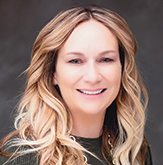St. Luke’s Health System creates an economical plan for handling new, ultra-expensive drugs

Pharmacy formularies can be nuanced and complex, often with many moving parts and ongoing challenges, like drug shortages, physician preferences, evolving therapies, reimbursement issues and the addition of ultra-high-cost drugs to the market. Kelley Curtis, PharmD, MBA, VP and Chief Pharmacy Officer at St. Luke’s Health System, says St. Luke’s has been on a mission to streamline and improve its pharmacy formulary management, with an emphasis on handling ultra-expensive drugs.
Establishing new processes for high-cost drugs
Four years ago, St. Luke’s Health System—a not-for-profit health system based in Idaho—set up a Medication Value Collaborative Group (a subset of the health system’s Pharmacy and Therapeutics Committee) with key stakeholders in finance, revenue cycle, legal and ethics. When a new medication was requested, the committee would determine the potential impact on the health system, which comprises eight medical centers.
The committee ended up approving most medications under this plan. While it seemed effective, it wasn’t the best approach, especially for ultra-high-cost drugs, Curtis explains. To better engage clinicians and the executive team, they began running select new drugs by St. Luke’s Health System’s Clinical Value Standardization (CVS) Committee, which is primarily composed of physicians. Medications with a potential impact of $1 million for non-oncology and $2 million for oncology (whether through a single patient or multiple patients) were run by the CVS committee. “There was this need to get a higher-level, more strategic view of these drugs,” Curtis says. “Now, we have more visibility.”
Today, new high-cost drugs (most of which are outpatient oncology and infusion drugs) are reviewed and approved by the CVS committee. If there’s any pushback, the drug is then rolled up to the executive committee for involvement.
Working out the reimbursement issues
The final piece of the puzzle, Curtis says, is the payors—St. Luke’s needed to figure out what their reimbursement was going to entail. “We started down a road of connecting with all of our payors in the communities we serve and seeing how we could start to gain more information from them to inform smarter decisions,” Curtis adds.
When a new drug is requested for formulary addition, St. Luke’s takes four to six months to properly understand the payor landscape. “We do this to bring a more informed picture to the executive team,” Curtis explains.
Seeing results

Rodney Brumbelow, PharmD, MBA, Clinical Pharmacy Member Support Director, HealthTrust IHP, says St. Luke’s Health System’s contract compliance is among the top for HealthTrust members. He believes this is partially due to their effective formulary management. “They put a lot of focus on what’s on contract and staying, if at all possible, with those items,” he adds.
While Curtis believes St. Luke’s still has progress to make when it comes to effective formulary management—particularly, with monitoring the drug pipeline—she is pleased at the accomplishments so far. “Our formulary guides prescribers, helps us control and manage inventory and provides options based first on safety, followed by efficacy and then by cost-effectiveness,” she explains.
Have formulary challenges? Contact your Account Manager or visit Pharmacy Services.
Share Email Drugs, Formularies, inSight Advisory, Q2 2024




